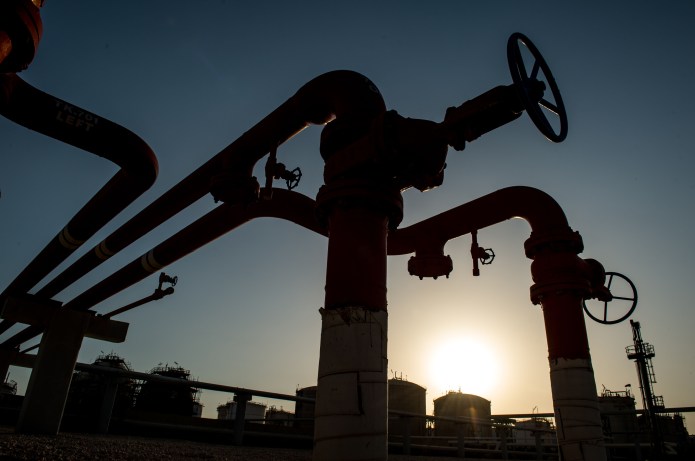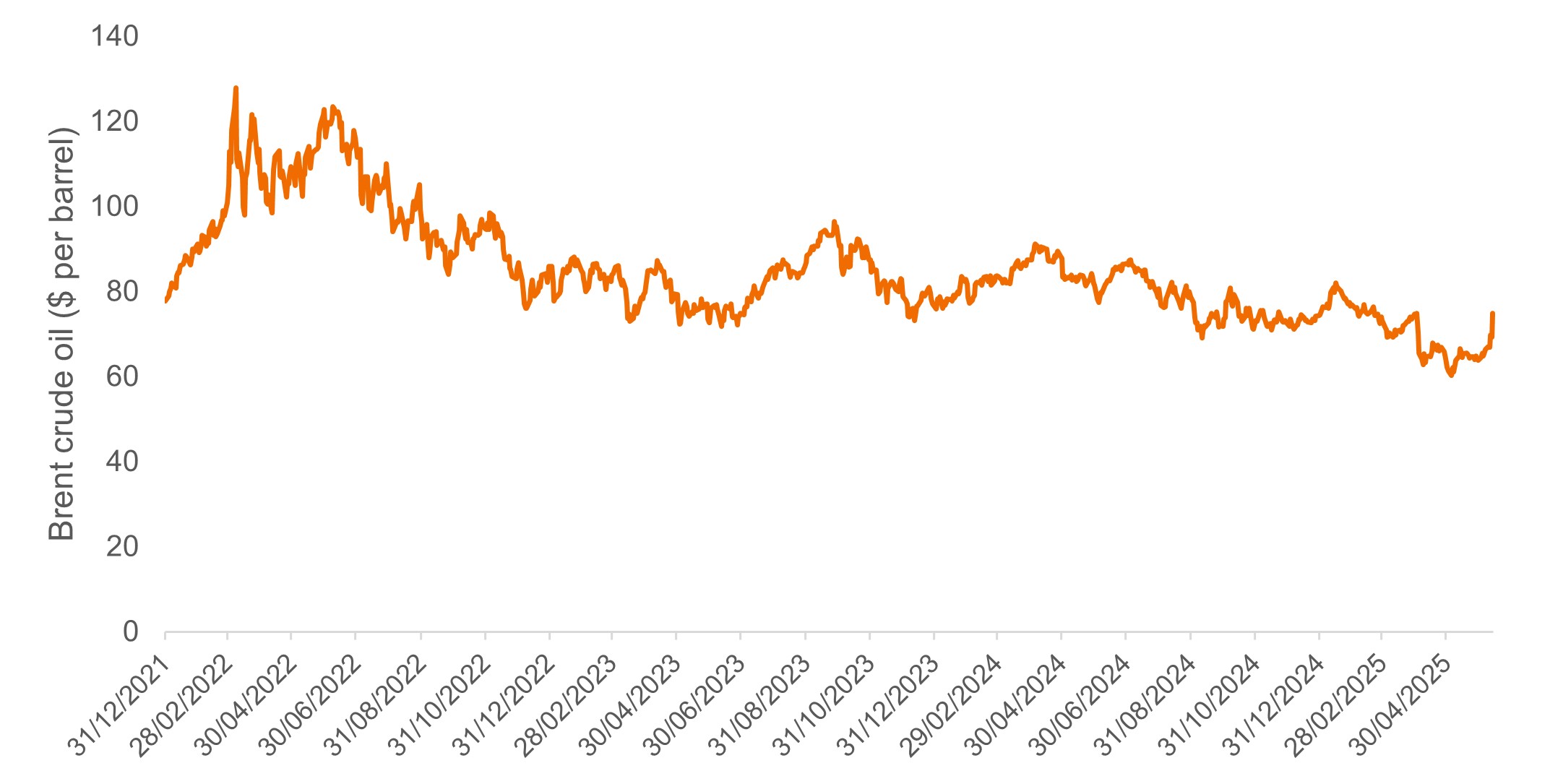Quick View: Israeli air strikes further escalate geopolitical risks in the Middle East
Portfolio Manager Oliver Blackbourn discusses the market's initial response to Israel’s attack on Iran and the implications for risk assets.

3 minute read
Key takeaways:
- Israel’s latest air strikes targeting nuclear infrastructure and senior Iranian officials resurfaces concerns around the disruption to oil and gas supplies and the possibility of greater retaliatory action.
- So far global markets have been muted, with government bond yields rising and equity indices dropping slightly. The VIX Index and safe havens like gold and the US dollar rose amid the uncertainty.
- Continued escalation in the Middle East could lead to further increases in oil prices and significant impacts on global financial markets and risk assets.
Israel’s air strikes on Iran again bring to the fore the geopolitical risks that remain in the Middle East. The attack also resurfaces the issues around the potential impact on the supply of oil and gas to global markets, given the large percentage of the energy trade that flows near to Iran. While Iran is responsible for just 4% of global oil production, its proximity to other key producers, including Saudi Arabia, makes potential escalation meaningful.
We have seen the Brent crude oil price spike towards US$80 per barrel on the news, before paring back to US$75, but still a significant rise on US$60 in early May. However, the price of a barrel of oil had ranged between US$70 and US$90 through 2024, to put the recent moves in context. This period includes prior exchanges of strikes between Israel and Iran, and is still far below the levels above US$100 per barrel in the wake of the Russian invasion of Ukraine in early 2022.
Air strikes have caused oil prices to spike – but within the range of recent levels’

Source: Bloomberg, Brent crude oil price ($ per barrel), 31 December 2021 to 13 June 2025.
Looking forward, we need to see whether Israel feels it has accomplished its objectives, and if there will be follow-up assaults. The attacks on nuclear infrastructure and high-ranking officials could stir a greater response from the Iranians in comparison to the last exchange in late 2024. The prior incident saw Iran make a show of force but ultimately caused little damage. This time the reply could be quite different given the targets, which include nuclear facilities.
Perhaps one of the most pertinent questions is whether US assets in the Middle East are targeted in response to the attack, which could further escalate the situation. The strikes come as the US is in negotiations with Iran about its nuclear aspirations, with US President Donald Trump having recently indicated that now was not the time for military action from Israel.
Beyond the oil price, the reaction from global markets at the time of writing has been relatively muted compared to recent shocks. In fact, we have seen that major government bond yields were higher on the day (13 June) as investors worried about the potential increase in inflation from higher oil and gas prices. Most major equity market indices were down by more than 1%, but have been bouncing back from the lows earlier in the day when the attacks were first reported.
However, a more obvious response was seen in areas such as the VIX Index of implied volatility, the gold price, and the US dollar. The VIX Index rose back above 20 as investors started to consider downside protection against the likely market impact of an escalation, having likely unwound this as equity markets continued to rally recently. Gold rose given the additional uncertainty, while the US dollar strengthened in contrast to its recent behaviour on rising risk, but more in line with what would have been expected over the last decade. While the reaction in markets has been fairly muted so far, further escalation into a wider conflict could yet send the oil price significantly higher and cause greater damage to risk assets.
Downside protection: Techniques employed to mitigate or prevent a decrease in the value of the investment.
Risk assets: financial securities that may be subject to significant price movements (ie. carrying a greater degree of risk). Examples include equities, commodities, property lower-quality bonds or some currencies.
VIX: the VIX Index is intended to be used as an indicator of market uncertainty, as reflected by the level of volatility. The index is forward-looking in that it seeks to predict variability of future market price action.
Volatility is the rate and extent at which the price of a portfolio, security or index, moves up and down. If the price swings up and down with large movements, it has high volatility. If the price moves more slowly and to a lesser extent, it has lower volatility. The higher the volatility the higher the risk of the investment.
These are the views of the author at the time of publication and may differ from the views of other individuals/teams at Janus Henderson Investors. References made to individual securities do not constitute a recommendation to buy, sell or hold any security, investment strategy or market sector, and should not be assumed to be profitable. Janus Henderson Investors, its affiliated advisor, or its employees, may have a position in the securities mentioned.
Past performance does not predict future returns. The value of an investment and the income from it can fall as well as rise and you may not get back the amount originally invested.
The information in this article does not qualify as an investment recommendation.
There is no guarantee that past trends will continue, or forecasts will be realised.
Marketing Communication.


